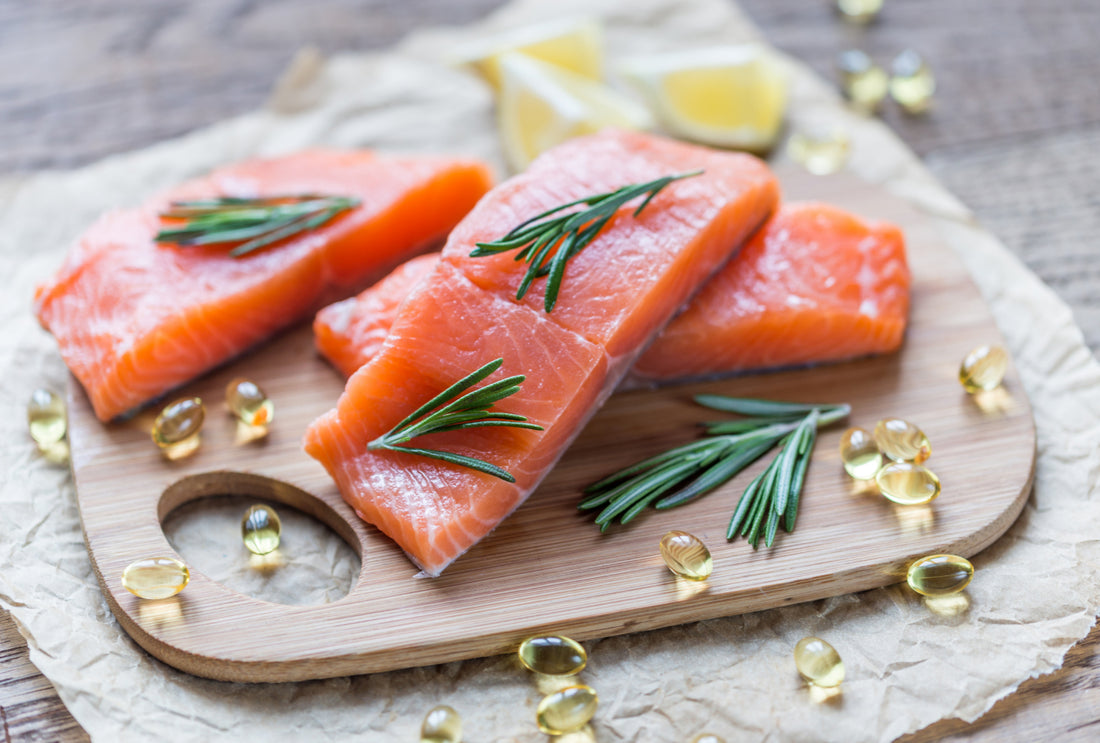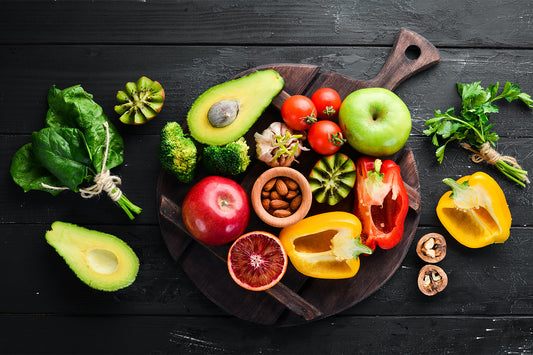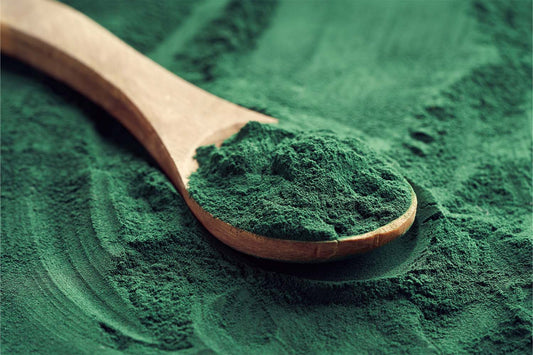Dietary fats are a deep and detailed topic in the world of nutrition. You may be familiar with saturated fats or trans fats, but these aren’t the only ones you need in your diet. Omega-3s and omega-6s are less talked about, but they are both important in a healthy diet.
Finding the healthiest omega-6 foods can play a crucial role in ensuring you get the right amount of the essential nutrient without overdoing it.
What Is Omega-6?

Omega-6 is a type of polyunsaturated fatty acid (PUFA) most commonly found in vegetable oils, nuts, and seeds. The most common types of omega-6 are linoleic acid and arachidonic acid. However, gamma-linoleic acid (GLA) is another form that exists in some plant seed oils.
The body is not able to make linoleic acid on its own, so it is crucial that you receive it from food. The good news is that omega-6 fatty acids are some of the most abundant fats in an American diet, and foods with omega-6 often contain it in the form of linoleic acid.
Omega-6 foods are an important part of a balanced diet. When eaten in place of saturated fats and from healthy sources, omega-6 fats may promote some of the following health benefits:
- Supporting cholesterol levels already within the healthy range
- Helping to maintain a healthy blood pressure
- Supporting heart health
There are no final dietary guidelines on the appropriate intake of omega-6, but there can be such a thing as too many of these fats.
In the body, linoleic acid is then converted into GLA. From there, it can be converted further down into arachidonic acid, which acts as an inflammatory compound in the body. There is some concern that too much could be linked to chronic diseases like cardiovascular disease.
Choosing healthy sources of omega-6s can help you maintain the benefits with less of the drawbacks. To get the most benefits, it is also important to balance omega-6 fatty acids in your diet with another essential nutrient called omega-3.
What Are Omega-3 Fatty Acids?
It’s nearly impossible to discuss omega-6 fatty acids without discussing omega-3 fatty acids, too. Like omega-6, omega-3s are a type of polyunsaturated fat, and they play an important part in building healthy cells.
Most importantly, in this context, omega-3 fatty acids play an important part in balancing out the effects of omega-6 fatty acids and helping to support important bodily functions.
The three most common types of omega-3 fatty acids are:
- Alpha-linolenic acid (ALA)
- Docosahexaenoic acid (DHA)
- Eicosapentaenoic acid (EPA)
The easiest form of omega-3 to find in daily foods is ALA, which is abundant in nuts, seeds, and plant oils. Although all three essential fatty acids provide some benefits, the most beneficial are DHA and EPA. However, the most common source of DHA and EPA omega-3 fatty acids is marine foods, which are less common in a Western diet.
Therefore, it is important to be mindful of how to include these two forms of omega-3 in your diet. Being mindful of your omega-3 intake will help you establish a better balance with how much you consume compared to omega-6. In most diets, the omega-6 to omega-3 ratio is about 16:1. However, a healthier balance is generally around 4:1 or less.
To maintain a healthy balance, experts say you should eat more omega-3s, not less omega-6s. Finding the right balance starts with eating the right foods.
What Are the Healthiest Sources of Omega-6 Fatty Acids?

Because the type of omega-6 fatty acids you consume matters, it is important to consume them from healthy sources. The best sources of omega-6 fatty acids provide a balance of omega-6 fatty acids and omega-3 fatty acids or a balance of omega-6 fatty acids and other nutrients.
Hemp Seeds
Hemp seeds are one of the best examples of healthy omega-6 fat. These nutritious seeds have an omega-6 to omega-3 ratio of 3:1.
Hemp seeds are not only a great source of healthy fats, but they are also full of other essential nutrients. Many people even consider hemp seeds to be a superfood because they are so rich in many vitamins and minerals. Other excellent nutrients in hemp seeds include iron, vitamin E, manganese, magnesium, and zinc.
Above all else, hemp seeds are also a powerful source of protein — just three tablespoons of hemp seeds provide almost ten grams of protein. Plus, they are a complete protein, which means they provide a complete profile of the essential amino acids you need in your diet.
Vegetable Oils
Vegetable oils are a common source of healthy fats, but it comes down to consuming the right ones.
Examples of oils with omega-6 fatty acids include:
- Avocado oil
- Canola oil
- Corn oil
- Olive oil
- Safflower oil
- Soybean oil
- Sunflower oil
Of the oils on this list, most contain little to no omega-3. The option with the best ratio is canola oil, featuring an impressive 2:1 omega-6 to omega-3 ratio. Like any food, though, moderation is crucial.
Oil is high in calories, so they can quickly add up. However, just a tablespoon or two of canola oil on your salad can be a great way to get healthy omega-6 fats in your diet.
Green Vegetables
For an incredibly healthy source of both omega-3s and omega-6s, look no further than green vegetables. Many of these vegetables include around a 1:1 ratio of omega-6s to omega-3s. Some even contain more omega-3s than omega-6s, providing the ideal balance.
Of course, green vegetables are also packed with other incredible nutrients, like fiber, protein, calcium, and vitamin C, among many more. Some great green vegetables to aim for in your diet include green beans, broccoli, leafy greens, and Brussels sprouts. You can easily add steamed or sauteed vegetables as a side to a balanced meal.
Flaxseed Oil
Flaxseed oil can be considered a vegetable oil, but its impressive omega-6 to omega-3 ratio puts it in a class of its own. Flaxseed oil contains three times as much omega-3 as it does omega-6, making it one of the rare foods that contain more omega-3 than omega-6.
Flaxseed oil contains ALA, the omega-3 precursor, so it shouldn’t be a primary source of omega-3, but it is a great addition to your diet. Like canola oil, flaxseed oil can be used in salad dressing.
Chia Seeds
Like flaxseed oil, chia seeds contain more omega-3 (in the precursor form, ALA) than omega-6, featuring an omega-6 to omega-3 ratio of 1:3. On top of their healthy fat content, chia seeds also make for a wonderful source of fiber and protein.
They are also rich in calcium, magnesium, and antioxidants to support healthy cells. Chia seeds are great for adding to your smoothies or oatmeal.
What Are Healthy Sources of Omega-3?
Even if you consume the most heart-healthy omega-6 fats, there are still many other sources out there. Meanwhile, there are fewer sources of omega-3 in a standard diet, so maintaining a healthy balance means eating foods that provide a healthy amount of omega-3. You can do this by relying on a few key sources.
Eating Fish
Fatty fish is one of the most well-known sources of omega-3. The best sources of this nutrient are fatty, oily fish like salmon, mackerel, sardines, and tuna.
The American Heart Association recommends eating two servings of fish per week in order to get enough DHA and EPA in your diet. However, cooking fish multiple times a week may be a challenge for people on busy schedules or for those who just plain don’t like fish.
Fish or Krill Oil Supplements
For those who might find eating fish unrealistic or undesirable, fish oil supplements provide a much more convenient option. Fish oil is made by extracting the oil from the tissues of the fatty fish we listed. You can consume fish oil supplements either in the form of oil-filled capsules or by consuming the oil itself.
Algae
Although they are not as popular as fish oil, algae supplements are an excellent option for obtaining DHA and EPA omega-3s. Algae supplements are a great option for anyone, regardless of lifestyle, as they provide the best of both worlds. For one, algae is an aquatic plant, so it is a great go-to choice for anyone on a plant-based diet.
On the other side, algae is great for those who aren’t on a plant-based diet as well. The omega-3s in algae are also absorbed better than those in fish or krill oil — specifically 1.7x better. Therefore, algae supplements are the all-around best option for anyone looking to get more omega-3s, and you can place your confidence in iwi life Omega-3 supplements.
Establish the Omega-6 Balance in Your Diet
Omega-6 fatty acids are a valuable nutrient to have in your diet, but having the right amounts makes an important difference. For a healthy diet, it’s crucial to get appropriate amounts of both types of omega fatty acids through the foods you eat. With an everyday omega-3 supplement, maintaining that balance becomes much easier.
iwi life algae-based omega-3 supplements offer a simple way to obtain your DHA and EPA essential fatty acids through a daily softgel. Explore our complete family of iwi life products for yourself to see all the ways that algae can support your overall health and wellness.
Sources:
Omega-6 fatty acids Information | Mount Sinai - New York
Omega-6 fatty acids: Can they cause heart disease? | Mayo Clinic
No need to avoid healthy omega-6 fats | Harvard Health
Seeds, hemp seed, hulled | USDA
Get an oil change! Improving your omega-6 to omega-3 ratio | Riverview Medical



















